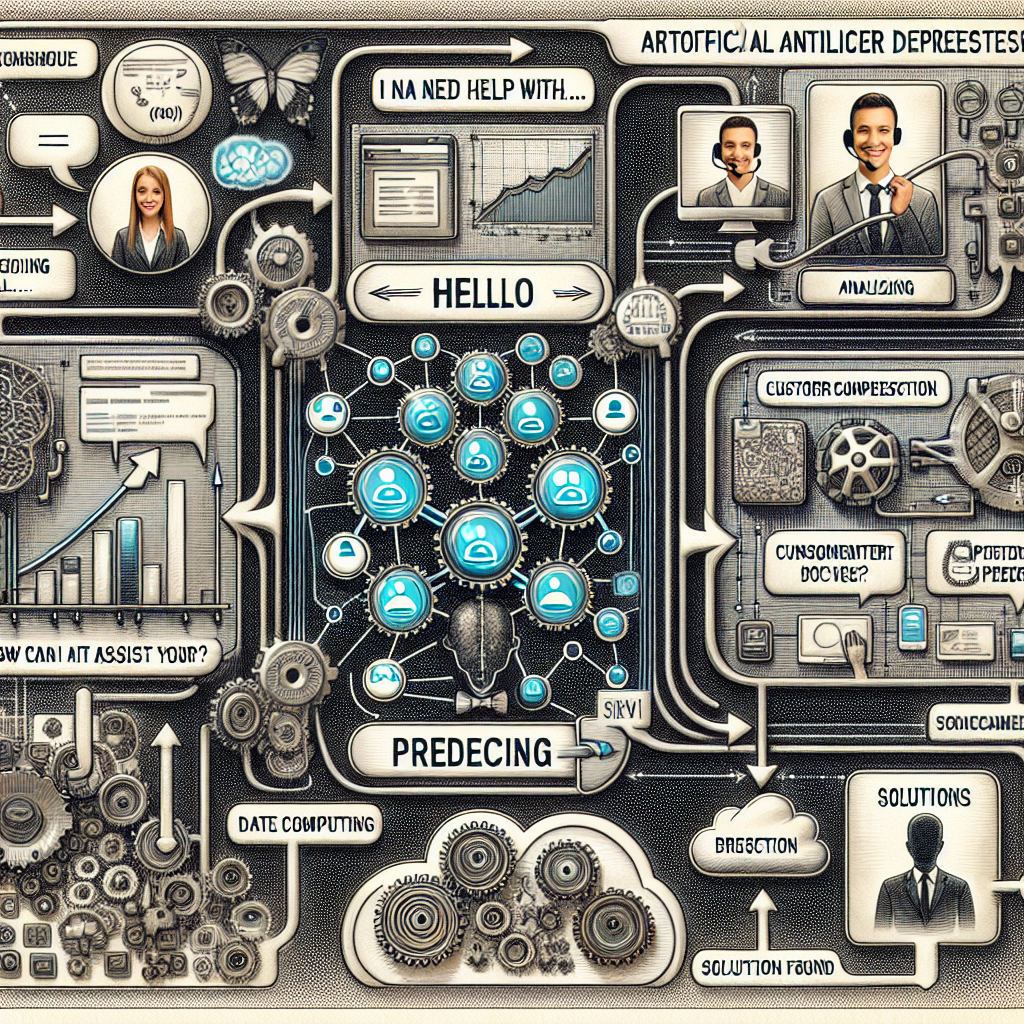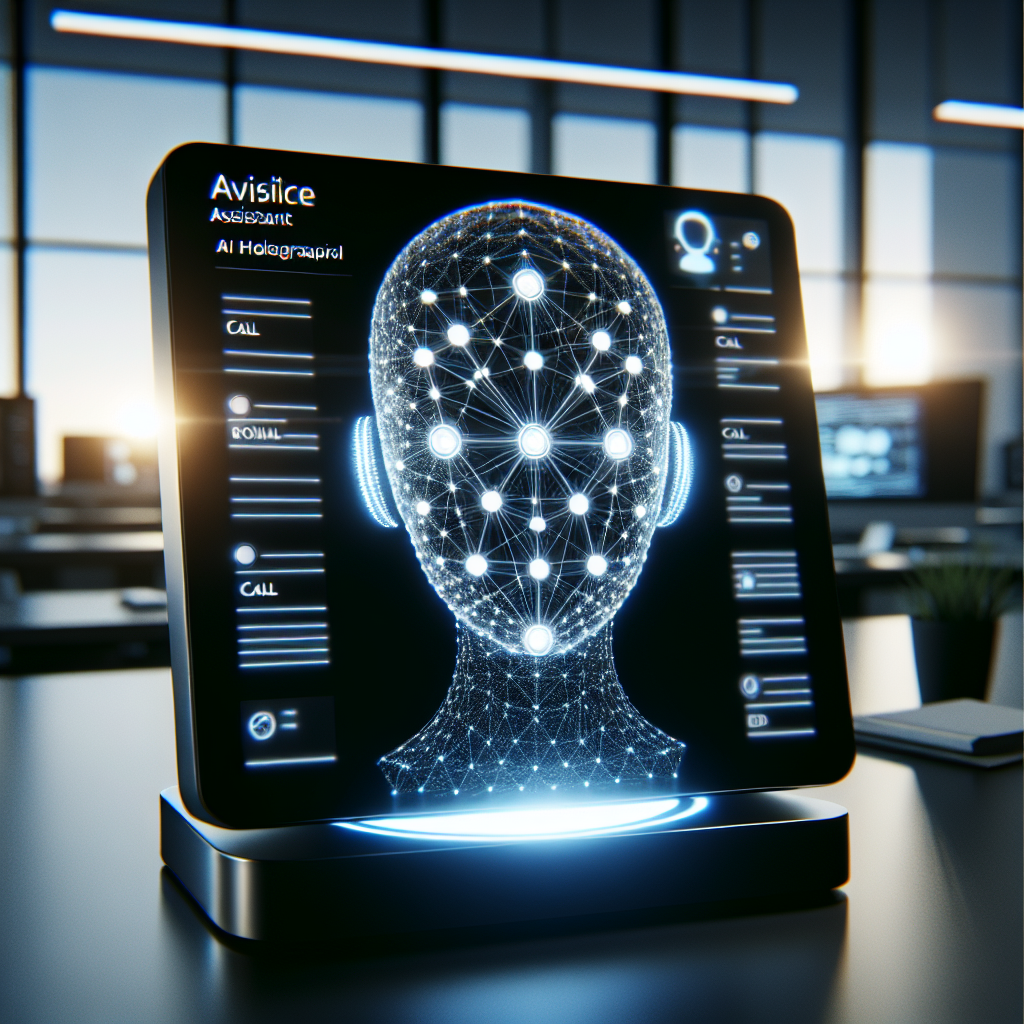
The world of customer service and call centers has undergone considerable change, largely driven by advancements in Artificial Intelligence (AI). With AI's emerging prevalence, customer service landscapes are reshaping the way conversations unfold and results are derived. One significant stride is the use of predictive AI in determining call outcomes based on initial conversation patterns.

Machine learning models, subfields of AI, are particularly adept at identifying patterns and learning from them. These patterns in a customer service setting often emerge from varied conversations between the help desk and the caller. These conversations and interacting styles can provide extensive data, enabling AI to make remarkable predictions about the likely outcome of the service call. This approach is strategic, helping in the allocation of resources, time-saving, and enhancing customer satisfaction.
With its massive capabilities, the predictive AI modeling comes as a revolutionizing tool in managing customer service calls. This innovative approach employs machine learning algorithms and big data analysis to anticipate customer behavior and service call resolution. It can even offer valuable insights for improving customer interaction.
Throughout this article, we delve further into how AI scrutinizes initial conversation patterns and predicts call outcomes. The marrying of artificial intelligence and customer service creates a dynamic landscape that optimizes call centers' efficiency, strengthens customer relationships and contributes to higher overall satisfaction rates. Prepare to discover how modern technology is driving customer services to new heights.
The prediction of call outcomes after initial conversation patterns is a highly specialized field that leverages the power of several Artificial Intelligence (AI) technologies. Notably, Machine Learning (ML) models and Natural Language Processing (NLP) algorithms play pivotal roles.
Machine Learning, a branch of AI, imparts the ability to the computer systems to learn and improve from experience without being explicitly programmed. In terms of predicting call results, it's the supervised learning aspect of ML that holds significance. Models under this category are trained using labeled data, i.e., where both the inputs and the desired outputs are provided. A prime example of a classification ML model relevant to this context is Support Vector Machine (SVM).
On completing the model training, it can classify new calls based on their initial conversation patterns and predict the outcome. Furthermore, regular tuning of these models using new data ensures their accuracy evolves with changing trends.
Meanwhile, Natural Language Processing, another branch of AI, is focused on enabling computers to understand, interpret, and generate human languages. NLP algorithms can analyze the transcript of the initial conversation, evaluate its sentiment, identify keywords, and understand the context to assist in predicting the call outcome. Bag of Words and Latent Dirichlet Allocation are two common NLP techniques used for feature extraction from text data.
In summary, the combination of ML and NLP technologies facilitates a holistic evaluation of the call, resulting in a highly nuanced and accurate prediction of the outcome. As the AI continues to evolve, these technologies promise even more precise and reliable predictions.
With the advent of technology such as artificial intelligence (AI), businesses across various sectors have turned to AI to understand and predict call patterns, thereby enhancing their customer service levels. Let's explore a few real-world case studies that reinforce these findings.

One instance to mention is a leading global bank that employed AlphaMax, an AI system to analyze and predict customer conversations. These accurate predictions enabled the bank to categorize customers according to their needs quickly, ultimately improving customer satisfaction rates, and reducing call handling time by 20%.
Another compelling illustration comes from the healthcare sector with a Florida-based hospital implementing IBM Watson, another AI-based system. Here, AI was brought into operation to categorize and label patient calls. With real-time analysis of each conversation, the AI system could predict treatment adherence and ensure essential healthcare was provided to patients, improving their overall experience and well-being.
Within the realm of e-commerce, a notable case is that of Amazon. They have long been advocates of AI and machine learning in their customer service operations. Their Amazon Connect provides a cloud-based contact center solution where machine learning models are built based on the initial dialogue with customers. These models are then used to predict future call outcomes, leading to considerable improvements in customer issue diagnosis and resolution.
Each of these examples showcases that by leveraging AI in predicting call outcomes and understanding conversation patterns, businesses can meaningfully enhance customer service, streamline operations, and improve overall business performance. The success of these real-world applications reinforces the transformative power of AI across diverse industry sectors.
To conclude, the application of AI and predictive analysis in customer service phone-call handling is no longer a suggestion but an imperative. As demonstrated by the case studies, AI not only enables businesses to predict call outcomes but also helps in formulating proactive customer engagement strategies, further propelling business growth and customer satisfaction in the long term.
The rapidly evolving field of Artificial Intelligence (AI) is transforming the methods by which businesses communicate with their customers. Particularly, the application of AI in predicting call outcomes based on initial conversation patterns is ushering in a new era of customer service efficiency. The benefits of such technology are multifaceted and have the potential to revolutionize the way companies operate their customer communication channels.
One of the significant benefits of predictive AI is the improved call resolution rate. Through the instant analysis of conversation patterns, AI can assist service representatives by providing real-time insights and suggested responses based on earlier conversations. This not only expedites the resolution process but also enables a more accurate understanding of the customer's needs. #source
Improved customer satisfaction is another notable payoff of predictive AI. By predicting call outcomes, AI can provide a personalized customer experience. It can identify potential pain points in the conversation and suggest solutions even before the customer raises them. This anticipation of issues significantly contributes to a smooth customer journey and boosts overall satisfaction levels. #source
Lastly, the integration of AI in call centers is a powerful tool for operational efficiency. AI can effectively manage high call volumes, reducing wait times and ensuring that service representatives are available for more complex queries. Further, by learning and improving continuously, AI systems can help to optimize call handling procedures, enhancing overall operation efficacy. #source
In conclusion, predictive AI in call centers manifests as a potent ally for businesses looking to boost their customer communication strategies. The benefits of improved resolution rates, enhanced customer satisfaction, and optimized operational efficiency help to augment not only the customer experience but also the overall business bottom line.
The advent of artificial intelligence (AI) has shown immense capabilities and possibilities, such as predicting call outcomes based on initial conversation patterns. However, there are unique challenges and considerations that need to be addressed.
The primary concern involves data privacy. Listening to and analyzing conversations raises questions about user consent and data protection. It is a challenging dilemma for developers to ensure the AI models operate within the bounds of privacy laws without undermining their performance. Furthermore, different jurisdictions may have varying interpretations of privacy, necessitating the creation of flexible systems adaptable to distinct data governance structures.

Equally significant is the need for high-quality training datasets. The efficiency of an AI model hinges on the quality, diversity, and volume of data it gets trained on. Generating or obtaining clean and unbiased data is a critical challenge that can impact the accuracy of predictions.
Another key consideration is the risk of bias in AI. Habits and patterns in conversations can be culturally-specific, and without careful consideration, AI can inadvertently perpetuate harmful stereotypes or misconceptions. It is vital that developers recognize this bias in AI and strive to avoid it.
Ultimately, while the predictive power of AI in call outcomes presents a compelling proposition, these challenges must be adequately addressed for its successful implementation.
AI and advanced predictive analytics are redefining the landscape of customer service. Future developments signal a trend towards AI systems that not only analyze historical data but also learn continuously, making incredibly accurate predictions about call outcomes based on initial conversation patterns. These technologies will enable businesses to significantly enhance the service quality offered to customers while optimizing their internal processes.
Continuous learning systems employ machine learning algorithms that improve over time, getting better and better with each interaction. These systems will be capable of analyzing not just the words, but also the tone, pace, and sentiment of the conversation. They will learn from each interaction, improving their ability to foresee customer behavior and predict call outcomes. In-depth articles on such AI-based systems can be found at this link.
The implications of these developments constitute a major shift in customer interaction management. The ability to train an AI system over time to recognize different customer concerns means that each call becomes part of an ongoing, ever-evolving interaction model. This in turn ensures that each subsequent customer interaction becomes more personalized and proficient.
Meanwhile, advanced predictive analytics will take this personalized customer service to the next level. They will be able to predict the likelihood of different outcomes based on prior data points and the initial phases of the conversation. Applying these advanced predictive models would empower customer service representatives to better address customer concerns, or even redirect the calls to the most appropriate agents on the get-go. You can learn more about predictive analytics in customer service in this in-depth article available at this link.
In conclusion, these trends hint towards a future where AI takes an active, real-time role in customer service, transcending beyond the realm of reactionary voice assistance. The advent of continuous learning systems and advanced predictive analytics will refine how businesses interact with their customers, ensuring high customer satisfaction and streamlined internal operations.
Start your free trial for My AI Front Desk today, it takes minutes to setup!








